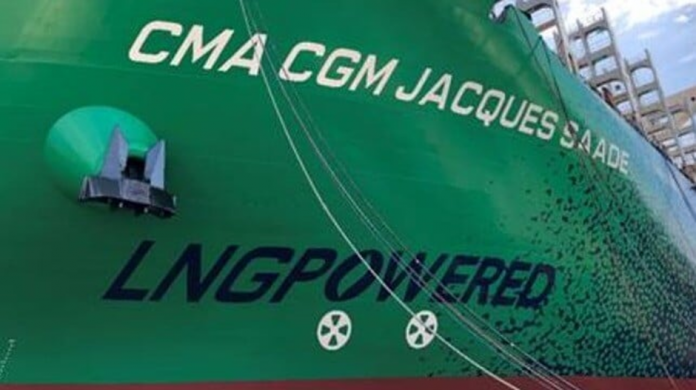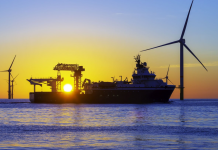
The movement toward alternative fuel and dual-fuel vessels continued in 2022 as the shipping industry worked to address the emerging regulatory issues and anticipate future efforts toward reducing carbon emissions. While the industry continues to seek clarity in the regulatory approach, orders for alternative fueled ships continued at nearly the same pace in 2022 despite the overall slowdown in construction orders.
In its year-end analysis, DNV reports from its Alternative Fuel Insight database that the total number of ships ordered outfitted with dual-fuel or alternative fuel propulsion was 275 vessels, excluding battery-powered ships. LNG remains the favored approach for dual-fuel ships but DNV also points to growth in other sectors, primarily dual-fuel methanol as well as dual-fuel LPG and the first applications of hydrogen ranging from crew transfer vessels to cruise ships including the MSC World Europa and Viking Neptune, each of which entered service with early hydrogen prototypes. While battery power is mostly for short-run ferries, a growing number of vessels are also employing batteries for in-port or near-port operations to reduce onshore emissions.
DNV calculates that the 2022 orderbook for alternative fuels breakdown shows that 81 percent of all ships with alternative fuels ordered last year were with LNG or a total of 222 ships ordered. Methanol was the second most popular alternative fuel choice in 2022, with 35 ships ordered or 13 percent of the total orders placed. Hydrogen continues to emerge representing eight percent of the orders including the efforts with cruise ships that anticipate they can near-term reach power levels from hydrogen to sustain hotel operations and become zero emissions while on dock.
“Against all odds, 2022 turned out to be almost on par with the record year of 2021 for LNG-fueled ship orders,” says DNV pointing to the rapid growth in the LNG sector. According to the AFI database, a total of 876 LNG-fueled ships are either in service or on order currently. A total of 104 LNG-fueled ships entered operation in 2022 which increased the total number of LNG-fueled ships in service by 41 percent to a total of 355 LNG-fueled ships in service.
A diverse group of LNG-fueled ships was delivered in 2022 according to Martin Wold, a Principal Consultant at DNV. He says large crude oil tankers led the sector followed by containerships. He, however, notes that will the number of LNG-fueled ships continues to grow, infrastructure and supply issues as well as a dramatic cost increase in the fuel means that not all of the ships are operating consistently on LNG as they wait for geographic and infrastructure gaps to be addressed.
Methanol he notes also established itself as an alternative in 2022. DNV’s data shows that there are 24 methanol-fueled ships in service with another 58 on order. Wold cites the cost advantages and ease of installing methanol systems for shipbuilders noting that engine manufacturers report high interest in methanol-capable engines. However, he believes concerns about sourcing and near-term scalability of green methanol are the main factors slowing its adoption currently.
“Looking ahead we expect 2023 to turn out similarly to 2022 in terms of newbuild orders for alternative fuels,” said Wold. “The orders will likely materialize across somewhat different ship types and sizes compared to last year, moving with the newbuild market in general.”
Despite the high price of LNG, he believes “the pipeline is by no means exhausted.” He forecasts, “The underlying growth for LNG fuel is nevertheless very strong and the market will likely return with a boom at some point, with bunkered volumes expected to triple within a very short time span.”
Similarly, Wold predicts the “interest and pipeline is building” for methanol-fueled ships. It is a view that is supported by the Methanol Institute which predicts 2023 will be an important year. They expect methanol will consolidate its position as a low-carbon marine fuel. With the fueling infrastructure developing and large methanol ships beginning to be delivered, the Methanol Institute expects momentum will build. They believe it will be driven in part by the EU’s regulatory initiatives including carbon pricing and the IMO which is due to finalize its policies at mid-year with the next meeting of the Marine Environment Protection Committee (MEPC).
Source – THE MARITIME EXECUTIVE




